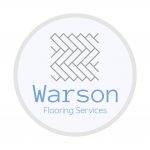FAQs
Screed is a broad term for smoothing compounds. Hard floors need a smooth, clean surface on which to lay the floor coverings and to allow the adhesive to have full effect.
There are two main types of screed, water-based and latex. Both have their own advantages and disadvantages, such as water-based being stronger on the surface, or latex screeds having an absence of protein within the compound making it suitable for areas requiring very good hygiene such as hospitals. When you get an estimate, your floor will be assessed and we will choose the correct screed for your needs.
All screeds should be used alongside an appropriate primer, to ensure proper bonding to the subsurface. You will often find that primers are bright colours such as blue or green: simply so the fitter knows where they have primed to ensure good coverage.
If a water-based screed is being used then it will take between 2-3 hours in warm, dry conditions around 20 degrees.
Latex screeds will be faster with a 1 hour walking time, but it is always best to ask the fitter as they will have assessed the conditions and can advise you accordingly.
There are a few different types of glues that may be used, each with different uses and working times.
Pressure-sensitive glue is a reasonably universal glue used on most surfaces that goes tacky before the floorcovering is fit on it. This means that they can be walked on immediately after completion, as well as have furniture put back etc.
Wet glues, such as high-temperature adhesives (to be used in front of windows that receive a lot of sunlight, or over underfloor heating) need time to set. These times can change depending on glues and conditions, but normally they are ready to be walked on 30-45mins after fitting.
LVT stands for luxury vinyl tiles. Karndean, Amtico and Polyflor are all names of companies who produce, among other things, LVT.
It can also be referred to as LVP or luxury vinyl planks.
LVT is a very versatile product that can be used anywhere around your home, from the bathroom to the bedroom, kitchen or lounge.
Coming in stone and wood patterns, it can provide many different styles and unlike ceramics or real stone they warm up to the temperature of the house without underfloor heating, so they do not feel cold. Individual planks can also be easily replaced, as opposed to something like laminate or real wood, where the planks lock together with tongue and groove, making LVT much easier to repair.
It is always a good idea to keep leftover planks stored flat in a cool, dry place. As they are vinyl, storing them stood up or leaning against something will mean they will bend over time, therefore they won’t be the correct shape to be used if needed.
It is always a very good idea to keep leftover flooring because of the way LVT is made. Big sheets of vinyl are made with a wood or stone effect print on them, which are then cut down to the size of the plank. With each new batch, a new print is used.
This means you might get a slight variation in colour, patterns and differences of the sheen of the protective layer. If you do not keep any spares and need a plank changed in the future, you may spot these slight differences.
LVT floors have a wear layer between 0.2 and 0.7mm thick which protects against scratches and general wear. Once this is broken through, the vinyl underneath may show. One of the main ways to avoid this is to put felt pads on the bottom of furniture legs.
One of the most common forms of damage we see is under chair legs, after months of pulling them in and out from under tables. This would be an ideal place for the pads.
Felt pads are very cheap and can be found in most homeware stores such as B&Q and Homebase.
LVT floors can be cleaned with warm, soapy water with a wrung-out mop. Most dirt will be swept up and washed off with ease.* Do NOT use neat bleach or harsh chemicals, as they can discolour your floor. If you think you need to use one of these products, always test it in a discreet area first.
Karndean and Amtico sell cleaning packs designed to revitalise your floor. These are optional so please ask if you would like one.
It is recommended to avoid using steam cleaners as the steep can get through the smallest of gaps in the planks and weaken water soluble glue over time.
*Always read the warranty from the manufacturer when you receive your floor. Warson Ltd will not be held accountable for any damage through incorrect application of cleaning fluids.
Any carpet that has been stretch fitted with gripper rods can be hoovered straight away. We will often hoover at the end of the job to clean up after ourselves.
If your carpet has been double stuck, for example in a room where you might have a wheelie chair, it is best to leave the carpet for 24hrs to allow the glue to fully cure before hoovering.
Carpets tend to release loose fibre for a couple of days. If you are still finding loose fibres after 3 days please let a member of the team know and they can take a look.
For everyday mess, hoovering should be enough to keep your carpets looking neat & tidy.
For spillages, dab with a damp cloth.
Polypropylene carpets can be cleaned with watered down bleach. Always test in an inconspicuous area before applying to large areas of the carpet.
Never pull the strand.
Using very sharp scissors or a sharp blade, cut the strand as low as you can to the backing of the carpet to reduce the risks of it getting caught in something and being pulled out further.
